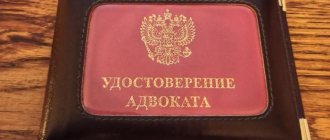ST 221 of the Criminal Code of the Russian Federation.
1. Theft or extortion of nuclear materials or radioactive substances - shall be punishable by a fine in the amount of one hundred thousand to five hundred thousand rubles, or in the amount of the wages or other income of the convicted person for a period of one to three years, or by forced labor for a term of up to five years, or imprisonment for the same period.
2. The same acts committed: a) by a group of persons by prior conspiracy; b) has become invalid; c) by a person using his official position; d) with the use of violence that is not dangerous to life or health, or with the threat of using such violence - is punishable by imprisonment for a term of four to seven years, with or without restriction of freedom for a term of up to one year.
3. Acts provided for in parts one or two of this article, if they are committed: a) by an organized group; b) with the use of violence dangerous to life or health, or with the threat of using such violence, - c) has become invalid, - shall be punishable by imprisonment for a term of five to ten years with a fine in the amount of up to one million rubles or in the amount of wages or other income of the convicted person for a period of up to five years or without it and with restriction of freedom for a period of up to one year.
Commentary to Art. 221 Criminal Code
1. The subject of the crime coincides with that specified in Art. 220 CC.
2. The objective side is characterized by alternatively provided actions: a) theft of nuclear materials or radioactive substances; b) their extortion. The content of the theft and extortion of these items generally does not differ from the content of the corresponding actions provided for in Art. 226 of the Criminal Code.
3. In qualified (clause "d" part 2) and especially qualified compositions (clause "b" part 3) liability for theft by robbery or robbery is provided, respectively.
Lawyer under Art. 226.1 of the Criminal Code of the Russian Federation Smuggling of potent, poisonous and toxic substances
Lawyer under Art. 226.1 of the Criminal Code of the Russian Federation provides protection in cases of smuggling at all stages of criminal prosecution, starting with verification in accordance with Art. 144 – 145 of the Code of Criminal Procedure of the Russian Federation and before filing, if necessary, a complaint to the court of second instance against the verdict. Only the right actions and following the recommendations of a smuggling lawyer can help you get out of an unpleasant situation with minimal losses. If you or your relative are threatened with criminal prosecution for smuggling steroids under Art. 226.1 of the Criminal Code of the Russian Federation, contact a criminal lawyer for protection by calling the phone number listed on the website.
Second commentary to Art. 221 of the Criminal Code of the Russian Federation
1. The subject of the crime is nuclear materials and radioactive substances.
2. The objective side is the theft or extortion of nuclear materials or radioactive substances.
Part 1 art. 221 does not cover such methods of theft as open theft, committed with the use of violence not dangerous to life or health, or with the threat of such violence; an attack for the purpose of stealing nuclear materials or radioactive substances, committed with the use of violence dangerous to life or health or with the threat of its use.
To recognize the theft as complete, it is necessary that the perpetrator takes possession of nuclear materials or radioactive substances and has a real opportunity to dispose of them.
Extortion of the subject of a crime is considered completed from the moment a demand is presented to hand over the specified items, supported by the threat of destruction or damage to property, as well as under the threat of dissemination of information disgracing the victim or his relatives, or other information that may cause significant harm to the rights or legitimate interests of the victim or his relatives (formal composition).
3. From the subjective side, the crime is characterized by direct intent.
4. The subject of the crime is a person who has reached the age of 16 years.
5. Qualifying and especially qualifying characteristics are set out in Part 1. 2 and 3 tbsp. 221.
Theft or extortion of nuclear materials or radioactive substances
1. Theft or extortion of nuclear materials or radioactive substances -
shall be punishable by a fine in the amount of one hundred thousand to five hundred thousand rubles, or in the amount of the wages or other income of the convicted person for a period of one to three years, or by forced labor for a term of up to five years, or imprisonment for the same period.
2. The same acts committed:
- a) by a group of persons by prior conspiracy;
- b) has become invalid. — Federal Law of December 8, 2003 N 162-FZ;
- c) by a person using his official position;
- d) with the use of violence that is not dangerous to life or health, or with the threat of using such violence -
shall be punishable by imprisonment for a term of four to seven years, with or without restriction of freedom for a term of up to one year.
3. Acts provided for in parts one or two of this article, if they are committed:
- a) an organized group;
- b) with the use of violence dangerous to life or health, or with the threat of using such violence, -
- c) has become invalid. — Federal Law of December 8, 2003 N 162-FZ
shall be punishable by imprisonment for a term of five to ten years with a fine in the amount of up to one million rubles or in the amount of the wages or other income of the convicted person for a period of up to five years, or without it and with restriction of freedom for a term of up to one year.
The note is no longer valid. — Federal Law of December 8, 2003 N 162-FZ.
Commentary on Article 222 of the Criminal Code of the Russian Federation
1. The subject of the crime is firearms, their main parts, ammunition, explosives and explosive devices.
It does not include pneumatic weapons, signal, starting, construction and installation pistols and revolvers. A firearm is a weapon designed to mechanically destroy a target at a distance with a projectile that receives directional movement due to the energy of a powder or other charge.
The main parts of a firearm: barrel, bolt, drum, frame, receiver.
Ammunition – weapons and projectile equipment intended to hit a target and containing an explosive, propelling or expelling charge or a combination thereof.
2. On the concept of explosives, see the commentary to Art. 218 CC. Explosive devices are industrial or home-made products that functionally combine an explosive substance and a device for initiating an explosion (fuse, fuse, detonator, etc.).
3. A faulty or training firearm can only be recognized as the subject of a crime when the perpetrator had the intention and real opportunity to bring it into a condition suitable for shooting or it contained components suitable for use.
4. The acquisition of items specified in the law means receiving them into permanent or temporary possession by any means.
Transfer means their temporary assignment to other persons who do not own them.
Sales should be understood as their irrevocable (as opposed to illegal transfer) alienation into the ownership of other persons as a result of any illegal transaction (paid or gratuitous).
Storage means actual possession of them, regardless of the specific location (in a home, outbuildings, special hiding place, etc.); transportation - actions to move these objects, regardless of the method of transportation, but not directly in front of the accused.
Carrying occurs in cases where the perpetrator secretly or openly keeps them with him, i.e. in clothes, bag, briefcase, etc.
5. Listed in Part 1 of Art. 222 actions are considered illegal if they are committed in violation of the rules for the circulation of weapons, ammunition, explosives, explosive devices established in regulations.
6. The crime is completed from the moment of commission of any of the actions specified in the law.
7. The subjective side of the crime is characterized by direct intent.
8. The subject of the crime is a sane person who has reached the age of 16 years.
9. In accordance with Part 4 of Art. 222 criminalizes the illegal sale of civilian firearms, smooth-bore long-barreled weapons, firearms of limited destruction, gas weapons, edged weapons, including throwing weapons.
Firearms of limited destruction are short-barreled and barrelless weapons intended for mechanical destruction of a living target at a distance by the throwing equipment of a traumatic cartridge, receiving directed movement due to the energy of a powder or other charge, and not intended to cause death to a person.
Gas means a weapon designed to temporarily destroy a target, which can be a person or animal, by using toxic substances that have a tear-producing, irritating or other effect. To purchase and store it, you must obtain a license.
Mechanical sprayers, aerosols and other devices filled with tear and irritant substances are also classified as gas weapons, but can be purchased freely. In Russia, the circulation of any gas weapons equipped with nerve agents, poisonous or other substances that can cause harm to health is prohibited.
10. Melee weapons are:
- objects intended to hit a target using human muscular power in direct contact with the target, which include bladed weapons, other weapons of cutting, piercing, chopping or mixed action, as well as weapons of impact-crushing action (brass knuckles, nunchucks, flails, etc.);
– objects intended to hit a target at a distance with a projectile that receives directed movement using human muscular power (throwing knives and axes, darts, etc.) or a mechanical device (bows, crossbows, etc.).
11. The note to the commented article provides for a special type of exemption from criminal liability.
Commentary on Article 221
1. The offenses provided for in the commented article are special in relation to the offenses of theft and extortion of someone else's property, provided for in Art. 158 - 163.
2. Part 1 art. 221 provides for liability for the theft of radioactive materials (for their concept, see the commentary to Art. 220) through theft (see commentary to Art. 158), fraud (see commentary to Art. 159), misappropriation or embezzlement (see commentary to Art. 159). Art. 160) and extortion (see commentary to Art. 163).
3. Part 2 of the commented article provides for liability for theft or extortion of radioactive materials under aggravating circumstances.
4. On the concept of a crime committed by a group of persons by prior conspiracy, see the commentary to Art. 35.
5. On the concept of repetition of crimes, see the commentary to Art. 16 and note to the commented article.
6. On the use by a person of his official position, see the notes to Art. 201 and 285.
7. Clause “d”, Part 2, Art. 221 provides for liability for the theft of radioactive materials through violent robbery (see commentary to paragraph “g” of Part 2 of Article 161) and extortion committed with violence or the threat of its use (see commentary to Parts 1 and 2 of Art. 163).
8. Part 3 of the commented article provides for liability for theft or extortion of radioactive materials under particularly aggravating circumstances.
9. On the concept of an organized group, see the commentary to Art. 35.
10. Clause “b”, part 3, art. 221 provides for liability for the theft of radioactive materials by robbery (see commentary to Article 162) or extortion committed with the use of violence dangerous to life or health, or with the threat of such violence. Violence dangerous to life and health is understood as the intentional infliction of minor harm to health, causing a short-term health disorder, as well as the intentional infliction of moderate harm and grievous harm to health (see comments to Articles 111, 112, 115).
11. According to paragraph “c” of Part 3 of the commented article, the actions of a person who has previously been convicted two or more times not only for theft or extortion of radioactive materials, but also for theft or extortion of someone else’s property (Articles 158 - 163), theft or extortion of weapons, ammunition, explosives and explosive devices (Article 226), theft or extortion of narcotic drugs or psychotropic substances (Article 229).
12. The theft of radioactive materials through theft, fraud, misappropriation or embezzlement and robbery is considered completed from the moment of taking possession of these materials. The theft of the latter through robbery or extortion is completed from the moment of using violence dangerous to life and health, or its threat (for robbery) or from the moment of demanding the transfer of radioactive materials under the threat of violence or with its use (for extortion).
13. The subject of the crime is a person over 16 years of age.
14. The subjective side of the crime is characterized by direct intent. The person is aware that he is committing theft or extortion of radioactive materials, as well as the social danger of the crime, and desires it. Unlike the subjective side of theft of someone else's property (Articles 158 - 164), here a selfish goal is not obligatory.
Scientific and practical commentary
:
1. The object of the crime is public safety in the sphere of regulation of the circulation of nuclear materials and radioactive substances. 2. The subject of the crime is nuclear materials or radioactive substances (see commentary to Article 220). 3. The objective side is characterized by either theft (see commentary to Articles 158 - 162) or extortion (see commentary to Article 163) of nuclear materials or radioactive substances. Theft is complete from the moment of taking possession of nuclear materials or radioactive substances, and extortion is complete from the moment an illegal demand for the transfer of radioactive materials is presented, associated with a threat. 4. The subjective side of the crime is characterized by direct intent. Selfish purpose in this composition is not a mandatory feature. 5. The subject of the crime is a person who has reached the age of 16 years. 6. A qualified type of crime is its commission: by a group of persons by prior conspiracy (clause “a”, part 2); a person using his official position (clause “c”, part 2); with the use of violence that is not dangerous to life or health, or with the threat of using such violence (clause “d”, part 2). A particularly qualified type of crime is its commission: by an organized group (clause “a” part 3), with the use of violence dangerous to life or health, or with the threat of such violence (clause “b” part 3). The content of qualifying and especially qualifying features was revealed during the analysis of Art. Art. 158 - 163 CC. 7. Subsequent illegal handling of nuclear materials or radioactive substances form a set of crimes provided for in Art. Art. 221 and 220 of the Criminal Code.
What does judicial practice show under this article?
The practice under Article 221 is not so common, because the items are especially dangerous and therefore well protected.
However, there are examples of cases:
- Citizen A. worked at a factory where radioactive substances were used to produce some parts. He decided to steal a number of such components in order to experiment with them at home. When submitting reports, a shortage of materials was revealed, so all employees began to be questioned about theft. A. confessed to what he had done and returned the stolen property. For this he was only given a fine and forced labor.
- Citizen E. worked as a cleaner in a laboratory where nuclear materials were stored. She was persuaded to steal 2 test tubes with valuable substances for the purpose of issuing a reward. She agreed, but did not know that there was a CCTV camera in the laboratory. She was quickly identified among the kidnappers and brought before the court. As a result, E. was fired and received a suspended sentence.
- Citizen V. worked at a nuclear waste processing plant. He didn’t know that they were too dangerous, so he decided to take a piece for himself “as a souvenir.” He kept it at home until he began to suffer from negative symptoms - this was the onset of radiation sickness. He went to the hospital, and doctors informed the police about the disease. After a search, the stolen item was found at V.’s place and brought before the court. But due to a serious illness that threatened death, V. was released from punishment.
What decisions are made under Article 221?
The article makes guilty decisions because the danger from crimes is too high. In 2022, 1 case was processed through it - under the first part. As a result, the offender received restriction of freedom.




